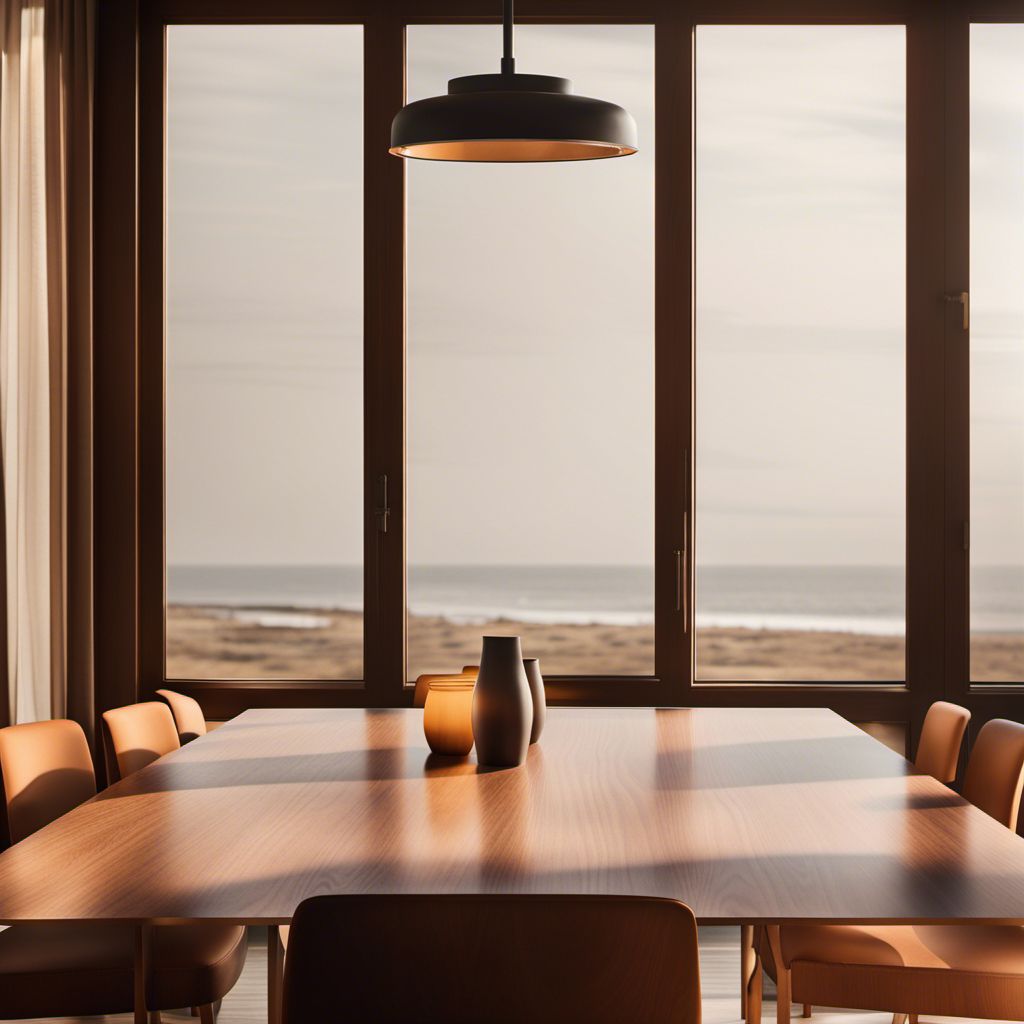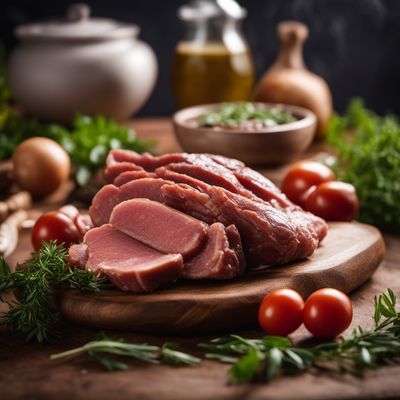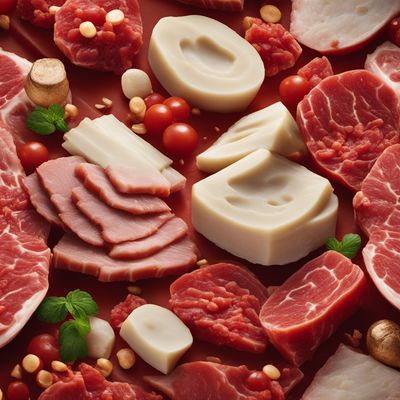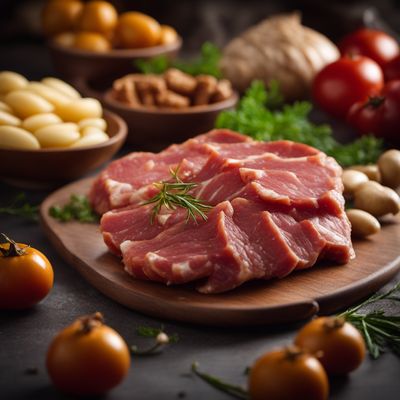
Ingredient
Hare fresh meat
The Wild Delicacy
Hare meat is dark and lean, with a distinct gamey flavor that is often described as a cross between venison and rabbit. It has a tender texture and can be prepared in various ways, including roasting, braising, or stewing. The meat is typically dark red in color and has a slightly stronger taste compared to rabbit meat.
Origins and history
Hare meat has been consumed for centuries and is considered a delicacy in many cultures. It is particularly popular in European cuisines, where it is often featured in traditional dishes like jugged hare or hare pâté. Hare hunting has a long history and was once a popular sport among nobility in medieval times.
Nutritional information
Hare meat is a good source of protein and essential nutrients like iron and vitamin B12. It is also low in fat and cholesterol. However, due to its gamey flavor, it may not be suitable for everyone's taste preferences.
Allergens
There are no known allergens associated with hare meat.
How to select
When selecting hare meat, look for cuts that are firm and have a deep red color. Avoid meat that appears discolored or has a strong odor, as this may indicate spoilage. If possible, choose meat from a reputable source that follows ethical and sustainable hunting practices.
Storage recommendations
To store hare meat, wrap it tightly in plastic wrap or place it in an airtight container. Store it in the coldest part of your refrigerator, such as the meat drawer, and use it within 2-3 days. If you need to store it for a longer period, you can freeze the meat for up to 3 months. Make sure to thaw it in the refrigerator before cooking.
How to produce
Hare meat is typically obtained through hunting, as hares are wild animals. It is not commonly raised or produced commercially. However, if you have access to fresh hare meat, you can prepare it by marinating it overnight to help tenderize the meat and enhance its flavor. It can then be cooked using various methods, such as roasting, braising, or stewing.
Preparation tips
Hare meat can be prepared in various ways, including roasting, braising, or stewing. It pairs well with bold flavors like juniper berries, red wine, and herbs like rosemary and thyme. Slow cooking methods, such as braising, help tenderize the meat and bring out its rich flavors. It is often served with hearty accompaniments like root vegetables or creamy polenta.
Substitutions
Rabbit meat can be used as a substitute for hare meat, although it has a milder flavor. If you prefer a stronger gamey taste, you can also use venison or other game meats as substitutes.
Culinary uses
Hare meat is commonly used in traditional European dishes like jugged hare, hare pâté, or hare stew. It is also featured in haute cuisine, where it is prepared with sophisticated techniques and paired with complementary flavors. In some cultures, hare meat is considered a festive dish and is served during special occasions or holidays.
Availability
Hare meat is commonly available in Europe, particularly in countries like France, Italy, and the United Kingdom. It is also consumed in parts of North America and Australia, where hares are found in the wild.
More ingredients from this category » Browse all

Kangaroo fresh meat
The Lean and Sustainable Protein

Llama or lama fresh meat
"The Exotic Delicacy: Discover the Unique Flavors of Llama Meat"

Camel fresh meat
The Exotic Delicacy: Camel Meat

Mixed pork and mutton/lamb fresh meat
The Perfect Blend: Pork and Lamb Combination

Marine mammals meat
Delicacy from the Deep Blue

Mixed beef and mutton/lamb fresh meat
Savory Meat Medley

Goat fresh meat
The Savory Delicacy

Bovine and pig fresh meat
The Butcher's Bounty: Exploring Fresh Bovine and Pig Meat

Pig fresh meat
The Versatile Protein: Pig Fresh Meat

Rat meat
"The Unconventional Delicacy: Exploring the World of Rat Meat"

Equine fresh meat
The Gastronomic Delight of Equine Cuisine

Sheep fresh meat
The Savory Delight of Sheep Fresh Meat

